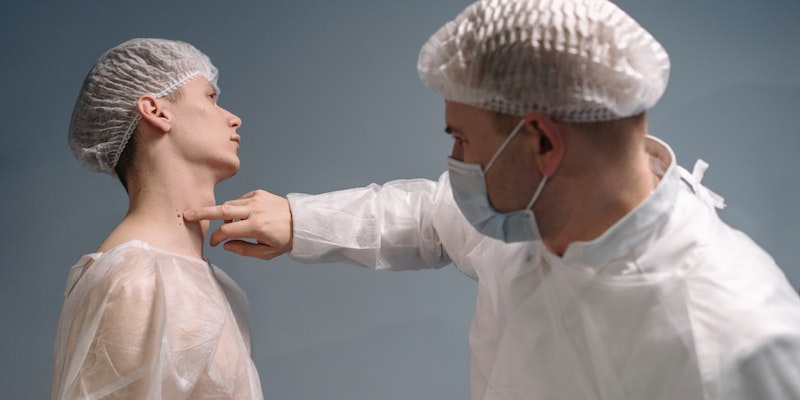Melanoma: Identifying Cancerous Moles and Their Causes
Oct 02, 2023
Cancerous moles, the culprits behind the notorious melanoma, are a pivotal concern in dermatology and general healthcare. Grasping the concept and development of cancerous moles is crucial in early detection and effective treatment. This section aims to elucidate the intricacies behind the formation and progression of these potentially hazardous formations on the skin.
What Are Cancerous Moles?
Cancerous moles, or melanocytic nevi, form due to the abnormal growth and clustering of pigmentation cells, known as melanocytes. Most moles are non-cancerous, displaying a uniform appearance. However, when a mole transforms aspects such as color, size, or shape, especially during adulthood, it raises concerns about malignancy.
- Characteristics of Non-Cancerous Moles: Generally, non-cancerous moles are even in color, round or oval, and smaller than a pencil eraser. They might be present at birth or develop during childhood and adolescence.
- Transformation into Cancerous Moles: The progression from non-cancerous to cancerous moles can be subtle. Vigilance for any alterations, including irregular borders, color variations, and increased size, is essential for early detection of signs of cancerous moles.
What Is Melanoma?
Melanoma is melanocyte-derived. It accounts for 1% of skin cancer instances but is the most deadly because it spreads quickly to the lungs, liver, and brain. Early detection of malignant moles improves prognosis.
- Pathophysiology: The malignancy starts in the melanocytes, where mutations allow the cells to proliferate uncontrollably, forming cancerous moles. If not detected early, these cells can invade nearby tissues and metastasize to other organs.
- Incidence: The American Cancer Society reports a steady increase in melanoma cases, emphasizing the importance of awareness regarding cancerous moles.
Identifying the Symptoms
Recognizing the symptoms of cancerous moles is the first step toward early intervention and effective treatment. Here, we discuss various methods and warning signs to help identify potentially malignant moles.
The ABCDE Method
The ABCDE method is an invaluable tool for evaluating moles for signs of malignancy. This method entails:
- A - Asymmetry: If the two halves of a mole are unequal, it might be a sign of malignancy.
- B - Border: Irregular, notched, or scalloped borders indicate cancerous moles.
- C - Color: The preseMultipleithin a mole can be a red flag.
- D - Diameter: Moles larger than 6mm warrant closer examination.
- E - Evolution: Any change in size, shape, or color over time signifies potential malignancy.
Regular self-examinations using this method can facilitate the early detection of cancerous moles.
Additional Warning Signs
Beyond the ABCDE method, additional signs of cancerous moles necessitate medical attention. These include:
- Itching or Pain
- Bleeding or Oozing
- New Moles
Causes of Cancerous Moles

Investigating the causes behind the development of cancerous moles offers insights into potential risk factors and preventative measures. Multiple factors contribute to the onset of these moles, ranging from environmental to genetic.
Ultraviolet Light Exposure
Exposure to ultraviolet (UV) light is a significant risk factor in melanoma development. Sunlight and artificial sources like tanning beds can induce cellular damage, increasing the likelihood of developing cancerous moles.
Genetic Predisposition
A family history of melanoma or other skin cancers can increase an individual's risk, pointing toward a genetic predisposition. Regular screenings and monitoring for signs of cancerous moles become even more crucial in such cases.
Immune System and Demographics
Individuals with compromised immune systems and specific demographic groups are at a higher risk. Older males and people with increased moles or a history of sunburns are particularly susceptible to developing cancerous moles. Awareness and regular check-ups are imperative for these high-risk groups.
Recognizing Skin Cancer Symptoms
Knowledge about skin cancer symptoms is imperative for early detection and timely intervention. This section will elaborate on the various manifestations and signs that could indicate the presence of skin cancer, focusing on melanoma skin cancer and guiding individuals on when to seek medical attention.
Visual Indicators
One of the first lines of defense against melanoma skin cancer is recognizing visual indicators on the skin's surface. Regular self-examination for unusual changes can facilitate early identification of skin cancer symptoms.
- Changes in Moles: Alterations in the color, size, or shape of existing moles are critical signs.
- Appearance of New Moles: The emergence of new growths, especially with irregular features, is a cause for concern.
- Skin Lesions: Any non-healing skin lesions or sores may indicate skin cancer.
Sensory Symptoms
Aside from visual indicators, sensory changes in the skin can also signal potential skin cancer. Paying attention to such changes can aid in identifying skin cancer symptoms early on.
- Itching or Pain: Discomfort in a mole or skin lesion should never be overlooked.
- Bleeding or Oozing: These are alarming signs and require immediate medical evaluation.
Systemic Manifestations
Melanoma skin cancer can sometimes present with systemic symptoms indicative of advanced disease or metastasis.
- Lymph Node Enlargement: Swollen lymph nodes can indicate melanoma spread.
- Unexplained Weight Loss might indicate advanced disease, necessitating immediate medical intervention.
Distinguishing Between Skin Cancer Spots
Awareness of the differences between benign and malignant spots is crucial in distinguishing skin cancer spots from non-cancerous growths. This section sheds light on the features that help differentiate between the two and guide individuals in identifying potential skin cancer spots.
- Uniform Color: Typically, non-cancerous moles have a single shade.
- Defined Borders: The edges are usually smooth and well-defined.
- Stable Over Time: There are minimal changes in appearance over time.
- Asymmetry and Irregular Borders: These are indicative of malignant transformation.
- Color Variation: Multiple colors within the same mole are alarming.
- Evolution Over Time: Any change in a mole's appearance necessitates evaluation.
- Self-Examination: Monthly self-checks help in identifying any new or changing spots.
- Dermatologist Visits: Regular visits, especially for high-risk individuals, are essential.
Prevention and Risk Management

Prevention is at the forefront of managing the risk of developing melanoma skin cancer. In this section, we explore various strategies and lifestyle modifications that can aid in reducing the risk and ensuring early detection of skin cancer symptoms.
- Sunscreen Use: Regular application of broad-spectrum sunscreen with a high SPF.
- Protective Clothing: Wearing long-sleeved shirts, pants, and hats with wide brims.
- Avoiding Peak Sun Hours: Limiting outdoor activities during peak sunlight hours.
- Self-Checks: Individuals should perform monthly skin self-exams.
- Clinical Examinations: Regular dermatologist appointments are crucial, especially for those with increased risk.
- Avoiding Tanning Beds: Artificial UV light is a known carcinogen.
- Maintaining a Balanced Diet: An antioxidant-rich diet can protect skin cells.
- Staying Physically Active: Regular exercise can boost the immune system, helping prevent cancer.





